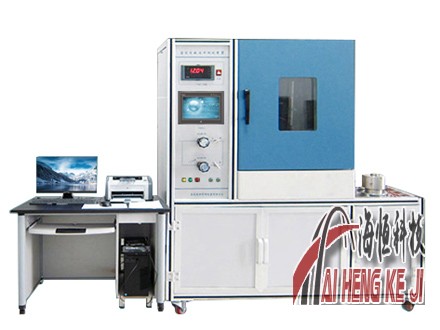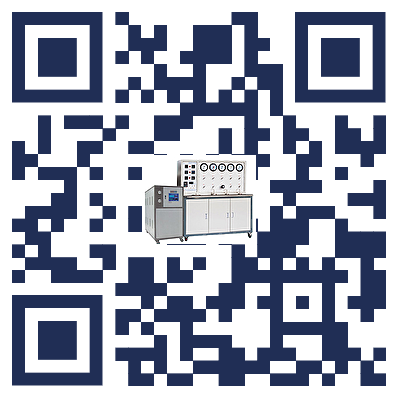I. Brief introduction of equipment:
Supercritical drying technology is drying under the critical and critical pressure conditions of drying medium, which can avoid the shrinkage and fragmentation of materials during drying, thus maintaining the original structure and state of materials and preventing the agglomeration and coagulation of primary nanoparticles, which is of great significance for the preparation of various nano-materials.
The development of ultrafine particles, especially nanometer particles, has been widely studied and applied in the fields of materials, chemical industry, light industry, metallurgy, electronics and biomedicine. The technology of preparing ultrafine particles by supercritical fluid can be used to process and prepare particles, microspheres, microcapsules, porous materials, liposomes and other fine materials.
There are many methods to prepare ultrafine particles. As a high-tech technology, supercritical fluid deposition technology can control the crystallization process more accurately, produce fine particles with very small average particle size, and control their particle size distribution.
There are two kinds of supercritical fluid deposition technologies: RESS (Rapid Expansion of Supercritical Solution) method and GAS (GAS Anti-solvent Crystallization) method. The processes derived from GAS method include SAS, ASES(PCA), SEDS, etc. This equipment can carry out experiments on the following processes: GAS method, ASES method (namely PCA method) and SEDS method.
Second, the principle introduction:
2-1, the main principle of GAS method
When high-pressure gas is dissolved into the solution phase containing solute, the solvent in it expands, which reduces the solubility of solute in it and leads to the crystallization of the solute.
2-2, the main principle of SAS method
The working principle and influencing factors of SAS method are almost the same as those of GAS, except that supercritical carbon dioxide is injected into the solution instead of gaseous carbon dioxide.
2-3, the main principle of ASES method
ASES process is aerosol solvent extraction process, also known as PCA process. GAS method is to inject gaseous CO2 into solution, while ASES process is opposite to its process, which is to inject solution into supercritical carbon dioxide. The crystallization kettle is pre-filled with CO2 fluid with a certain pressure, and after the pressure and temperature of the crystallization kettle reach a stable state and form a supercritical state, a solution with a certain concentration is sprayed into the crystallization kettle through a nozzle to form fine droplets.
Because high-pressure CO2 and organic solvents can be miscible with each other, on the one hand, CO2 quickly dissolves into the droplet, causing it to expand, and the solubility of the solvent is rapidly reduced; on the other hand, the organic solvent in the droplet also quickly dissolves into high-pressure CO2, forming extremely high supersaturation in a very short time, so that the solute can be rapidly precipitated and form extremely fine and uniform particles. If a small amount of CO2 is added to the organic solution in advance, porous particles will be produced after spraying. The formed particles are filtered on the filter at the bottom of the crystallization kettle, and the mixed fluid of carbon dioxide and solvent flows out of the crystallizer and enters the decompression kettle for gas-liquid separation.
In ASES process, besides temperature, pressure and initial concentration of solution, the operating parameters that affect particle morphology, particle size and particle size distribution, like RESS process, the structure and size of nozzle have an important influence on the results.
The difference between ASES process and GAS process is that particle formation and drying are carried out at the same time in ASES process, and the residual organic solvent content in the formed particles is less. However, the crystallization and precipitation process in GAS process takes place in liquid phase, and it takes a long time to get dry solid particles. The operating pressure of GAS process is much lower than that of RESS process, about 10MPa.
2-4, the main principle of SEDS method
SEDS process (precipitation process of enhanced solution dispersion by supercritical fluid) is a process of spraying supercritical CO2, aqueous solution containing solute and organic solvent into crystallizer together, and then contacting and mixing them for a short time. Because the flow rate of organic solvent is much higher than that of solute aqueous solution, the solute is rapidly precipitated after the two are mixed, and the flow rate of high-pressure CO2 is much higher than that of organic solvent, so that the solution and organic solvent are immediately dispersed into droplets by CO2 sprayed at high speed after mixing, and at the same time, a small amount of organic solvent and water in the droplets are quickly dissolved in CO2, so that the precipitated solute particles can be quickly dried.
III. Main technical parameters:
Working pressure of crystallizer: 30MPa
Working temperature: room temperature ~ 150℃
Crystallizer volume: 1000mL
Working pressure of separator: 10MPa
Separator volume: 1000mL.
Refrigeration capacity: 3300kcal/h
Power supply: AC380V 10kW
Four, the main components performance:
The device consists of the following parts: CO2 supply system, solution feeding system containing solute, organic solvent feeding system, crystallizer, pressure relief device, temperature control system (heated by air bath in constant temperature box) and safety protection system.
4-1, CO2 supply system
It consists of a CO2 steel cylinder, a purifier, a refrigeration system, a CO2 plunger pump, a buffer tank, a preheating coil and corresponding pipe valves.
The volume of the purifier is 200mL, the design pressure is 8MPa, the inside of the purifier is filled with molecular sieve or silica gel, which can filter impurities and moisture, and the mesh number of the internal filter screen is 400 meshes (equivalent to 38μm).
4-2, refrigeration system
Which is used for refrigerating gaseous CO2 into liquid CO2. It is convenient for high-pressure injection and stable pressurization, with refrigeration capacity of 3300kcal/h, air-cooling water circulation system and silent operation.
4-3, CO2 piston pump
The discharge pressure is 32MPa, the flow rate is 10L/h, and the three-plunger frequency conversion adjustment can reasonably reduce the pulse influence of high-voltage input and ensure the product quality.
4-4, buffer tank
It is mainly used for buffering CO2 in front of crystallizer to reduce the impact of pulse. The volume is 500mL, and the working pressure is 32MPa.
4-5. Preheater
It is mainly used for preheating CO2 before crystallizer, and placed in a constant temperature box.
4-6. Solution feeding system containing solute
It consists of glass, plunger pump and corresponding pipe valves. Among them, the piston pump: the flow rate is 400mL/h, and the discharge pressure is 32MPa.
4-7, organic solvent feeding system
It consists of glass, plunger pump and corresponding pipe valves, which is specially designed for SEDS process. Among them, the piston pump: the flow rate is 4L/h, and the discharge pressure is 32MPa.
4-8. Crystallizer
The volume is 1L, and the inlet is connected with a nozzle. The nozzle is made of stainless steel and perforated by laser. The ratio of length to inner diameter is 15: 1. The specifications of inner diameter of the nozzle are 60μm, 80μm and 100μm, and 120μm can be selected according to the experimental needs.
A single nozzle is arranged inside the crystallizer. Single-head nozzles can be replaced with nozzles with different fine inner diameters. The structure of single-head nozzle is mainly used in GAS method and ASES method (PCA method).
4-9, separator
The volume is 1000mL and the design pressure is 10MPa, which is mainly used for gas-liquid separation. The structure is slender, which is convenient for separation and recovery of liquid solvent.
4-10, incubator
The size of the working room is 500 (length) ×500 (width) ×600 (depth). The temperature is controlled by a thermostat. The thermostat is equipped with a heater and a circulating fan. The heat exchange adopts convection and radiation heat transfer. The working rooms are all stainless steel liners, which are novel in design, beautiful in appearance and compact and reasonable in structure.
4-11, safety protection system
In order to ensure the safety of the system, we designed a safety protection system, which mainly consists of an electric contact pressure gauge and a safety valve. The electric contact pressure gauge controls the pressure of the pressure source (plunger pump), and can set the upper limit pressure to avoid overpressure. In addition, a safety valve is installed on the crystallizer to implement overflow protection.






 客服1
客服1